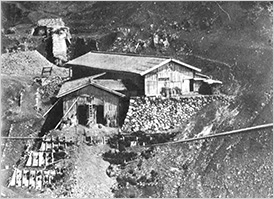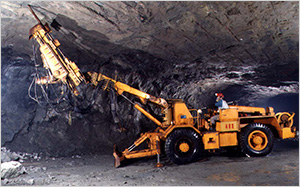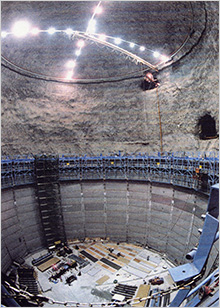What sort of mine (mountain) is Kamioka Mine?

Jabara pit(1905)
Located in Hida, Gifu prefecture, Kamioka is a town nestled in the mountains of Okuhida, close to the border with Toyama prefecture. It is also home to Kamioka Mine, one of the leading sources of zinc in Japan and formerly one of the largest scale operations of its kind in the orient. The mountain itself is made from a rock known as “Hida gneiss,” which is thought to have been formed around 250 million years ago, and contains zinc, lead and silver.
The mine has a long history dating back to the Yoro era of the Nara period (around 720), when gold is said to have been discovered on the site and presented to the Imperial court. As the country’s rulers changed through the Muromachi, Azuchi-Momoyama and Edo periods, minerals continued to be extracted from the mine throughout.
As times moved on, in 1874 the Mitsui Clan acquired the Jabaradaira pit at Kamioka mine and began modern mining operations. From that point onwards, all the way through to the suspension of mining in June 2001, the mine (mountain) continued to contribute to the stable supply of zinc and lead resources in Japan, keeping pace with modernization over the course of 130 years.
Establishing a long line of mining technologies

Large heavy machinery
Kamioka Mine is more than just a source of resources. It has also established and implemented a long line of mining technologies ahead of any other domestic mine. For example, it was the first mine in Japan to introduce trackless mining, whereby all tunnels are linked by inclined shafts rather than using mining carts or other forms of conveyance, and it was the first to use extraction technologies such as large heavy machinery too.
Enabling large pieces of heavy machinery to move around freely inside the mine enabled more specialized operations, which in turn paved the way for increased productivity.
It is thanks to achievements such as these that Kamioka Mine continued to operate steadily even during the tough times from 1975 onwards, which saw a string of closures across domestic mines.
Making effective use of underground spaces

Super-Kamiokande under construction
Mining technologies developed over many years in Kamioka have continued to be used for mining development the world over.
We are currently expanding these technologies in order to make different uses of the underground space beneath the mine, in the form of rock engineering. These technologies have become an invaluable asset to us here at the Mitsui Kinzoku Group.
History of Kamioka Mine
| Around 720 |
Stories of gold being discovered and presented to the Imperial court |
| 1589 |
Hikojiro Itoya (later Munesada Mozumi), retainer to Lord Kanamori of Echizen Ohno, discovered ore and began operating Mozumi and Wasabo silver mines |
| Around 1600 |
Edo Shogunate gained control of the Hida region and established the Maebira pit as a directly controlled mine (Oteyama) in 1816 |
| 1874 |
Mitsui Clan acquired Ohdome, Maebira, Jabara and Shikama pits (Tochibora pit) |
| 1886 |
Commenced western lead smelting operations at Shikamadani |
| 1889 |
Acquired Mozumi pit and extended operations to the entire mountain in Kamioka |
| 1905 |
Started extracting zinc concentrate |
| 1912 |
Completed major conveyance tunnels for Tochibora and Mozumi pits |
| 1918 |
Installed silver electrolysis plant at Shikama |
| 1921 |
Installed lead electrolysis plant at Shikama |
| 1939 |
Opened Maruyama pit |
| 1943 |
Commenced operations at zinc electrolysis plant |
| 1968 |
Introduced trackless mining at Tochibora pit |
| 1986 |
Kamioka Mining Co. Ltd. spilt off as an independent company from Mitsui Kinzoku |
| 2001 |
Large-scale extraction of minerals from Kamioka Mine suspended |